It’s an almost unthinkable reality, it must be said. But we’ve reached the point where I have been the editor of AVENGERS at Marvel for twenty-five years. True, my first issue, the start of the Heroes Return era of Kurt Busiek and George Perez didn’t ship until December 17, 1997, but by September of that year, we were already well into working on it. For a series that will be celebrating its own 60th Anniversary next year, 25 years is a good chunk of that history—not quite half, but well over a third. I never really set out to edit AVENGERS, it was a series that I liked, but my heart was more with FANTASTIC FOUR. But since being handed the title, it’s been the “anchor store” of my operation, and I see no sign of stopping any time soon. For all that we’re in the initial stages of Jason Aaron’s big AVENGERS ASSEMBLE wrap-up to his five year tenure as writer, the creative team that will follow him has been selected and has begun working—so for good or ill (and there has been some of both I am sure over the past quarter-century for AVENGERS fans) my impact will continue to be felt.
Now, I don’t talk about this simply to chest-thump, although a certain amount of that is unavoidable. A 25 year tenure on the same title editorially is rarified air. So I’ve been thinking about who else in the field has managed to pull this off—and the pickings are slim. No other editor in the history of contemporary Marvel has matched it, nor contemporary DC. So it really comes down to history. I can only think of a few. Robert Kanigher took over WONDER WOMAN editorially in the late 1940s and ran it until the late 1960s—I’d need to do a bit more research to be certain that he did a solid 25 years but it has to be close. Al Feldstein ran MAD from 1956 through 1985, and that at least started as a comic book before becoming a comics-oriented magazine. And Dan Slott delighted in pointing out that Erik Larsen has been doing SAVAGE DRAGON for 30 years, and he’s the defacto editor of that series. At which point, the same can be said of Todd McFarlane and SPAWN. And you need to cheat a bit, and not worry about the brief moments where the book didn’t come out for a year or two, but Stan Lee worked on MILLIE THE MODEL starting in the mid-1940s (though he wasn’t necessarily directly editing it at all times) and that series ran until the late 1960s. Mort Weisinger started on the SUPERMAN titles in the early 1940s, though he didn’t become the editor-of-record until around 1958. And his tenure ran until 1970. Julie Schwartz edited THE FLASH from its inception in 1959 through 1979, but if you count the four SHOWCASE issues as a part of that run, that takes things back to 1956. And Julie also edited the Golden Age FLASH COMICS starting in the mid-1940s, so if you want to tack those all on, he’s in the game. Dave Sim did CEREBUS from 1977-2003, though he wasn’t the editor per se. But that’s really about it. Who else am I forgetting? Craig Chase worked for Western/Dell/Gold Key for a good long while, was there anything in his wide stable of titles he shepherded for a quarter century?
So I don’t know, I feel like it’s a noteworthy accomplishment, even if it’s one that most folks have no particular awareness of. I’ve seen AVENGERS go through periodic ups and downs, times when it was the hottest thing in the industry and times when it was tough to give the book away. These days, ever since the first AVENGERS film, there’s been a relatively solid base of interest in the team—they’re now known the world over in a way that they simply weren’t when I started out. It’s all kinda cool, and it’s been fun to be a part of.
Anyway, enough of my jabbering. Let’s see what’s on your minds, starting with perennial question-asker, Evan “Cool Guy”:
I remember you saying that the Variants (which I am really enjoying, we’re getting lots of multiverse stories right now but this one hits on the things I like most about them) started from a story idea by you. Which of your story ideas are the most well known, and are there any you wish you could take back?
That’s honestly a tougher question to answer than you might think, Evan. I don’t really keep any sort of a scorecard as to what notions were mine and what ideas came from other people. And usually, even if an idea started with me, like the thought that we should do a book called THE VARIANTS since the term was getting such heavy play in the LOKI Disney+ series, the end result has far more to do with the creators involved—in that case Gail Simone and Phil Noto—than it does with me, to the point where I really can’t claim any credit for the story in THE VARIANTS apart from helping to tidy up around the edges a little bit. Along similar lines, when MARVEL STUDIOS announced that the title of the next AVENGERS film was going to be THE KANG DYNASTY, Kurt Busiek mentioned that he thought that I was the one who coined that name for our storyline of years ago. But I have no memory of that one way or the other. If I did do so, it was likely on a call with Kurt where we were bouncing ideas around. If you’re going to be successful as an editor in this business, you can’t be precious with your ideas, the job isn’t to write the comics from the back seat. And so, I make a lot of suggestions as things are being worked on. Many of them are awful, a few stick, and sometimes one of the awful ones inspires a response from somebody that turns out great. That’s the way it works. One of the benefits of doing the Comic I Worked On feature is that it gives me the opportunity to think back on the specifics of some long-ago issue and remember a little bit of what was going on, then hopefully relay that to you in an interesting fashion. Without that structure of a past date, I might never think to write about most of the books we’ve covered nor the stories behind them. In terms of regret about bad ideas, I save that more for projects that go off the rails in some way. And even then, the metric of success that I use is different than the obvious. I tell our editors that an editor cannot make any project good, but he or she can make it better, so it’s that scale of improvement and impact that I typically use as my yardstick. If a book is a stinker, but I can see how much more awful it would have been had I not worked on it, that’s a big win for me. And a well-received book that fell short of what it ought to have been is a failure no matter how many people love it. The good thing about comics is that much of the time, you get another chance to get it right next month, and any bad idea can be reoriented by a good story to follow.
Next up, a question from Jason Holtzman:
do you think the rise of bingeable tv shows has created a potent change in how people consume media?
For my part, I do feel like there is a new general feeling of impatience harbored by viewers and “fans” sometimes, especially when they are forced to wait for the outcome of a cliffhanger or seemingly major twist in a story instead of getting to experience it all at once.
In that vein, has the trend towards bingeable, or collected media, become a lifeline for older works? Especially in the realm of comics? I know that in the grand scope of things, the graphic novels/collections of ongoing series we have now are new to the industry, and part of me has to wonder if the ability to compress old books into one volume has streamlined the ability of “hidden gems” to pop up, as some books are more enjoyable when read all together rather than month by month. I’ll say that while I’m reading plenty of series that I think the month to month time gaps aids the tension of the story (King and Smallwood’s Human Target comes to mind), I have also read many others that I felt were better when collected in a trade.
I think in the short term, the immediate availability of bingeable shows certainly did have an impact on how people consumed their media and what they wanted from it. But by that same token, I can already see that pendulum having started to swing back the other direction in a big way. Take last week for example. Netflix dropped the fifth season of Cobra Kai, a popular show, on Friday. I wound up watching the entire season over that weekend, across three nights. And I enjoyed it. But by Tuesday, I had moved on to something else and wasn’t really thinking about Cobra Kai any longer. And the rest of the world seems to have followed suit, though there have been a small spate of articles and interviews peppered throughout this week. Funnily enough, a piece about Sony’s upcoming film plans announced a new KARATE KID film and called it a “return to the franchise”. Yes, a franchise that had lay dormant for six days. There is certainly an intensity to having an entire season drop all at once that can be difficult to duplicate. But it seems to me that the shows that are getting the most chatter right this moment are the ones that are releasing episodes weekly—whether HOUSE OF THE DRAGON, THE RINGS OF POWER, RICK AND MORTY or whichever STAR TREK, STAR WARS or MARVEL shows happen to be currently airing. And sure, there’s some degree of impatience, but that’s really always been the case. That’s why cliffhangers work, after all. There are benefits and deficits to doing things either way—I thought, for example, the SANDMAN team was especially canny to hold back an unannounced 11th episode and then drop it a week after their show had premiered, right at the time that people were finishing or finished with it. It game them an added boost of interest while still fulfilling the binge model. How does this impact on the world of comics? Well, there’s always been a certain appreciation for the Original Graphic Novel as a format—the problem has always been that the finances don’t work as well for that format as they do for the periodical-then-collected-edition model. It’s a genuine monetary investment to produce let’s say 120 pages and then drop it all at once, and typically at a price that’s not equivalent to six regular issues. So those financial difficulties are one reason why I wouldn’t expect the serialized model to go away completely. At the same time, teams like Ed Brubaker and Sean Phillips have found some good success in releasing their work as OGNS, three or so a year. That maintains the overall rhythm and flavor of being periodical while also giving readers a complete story in each instance, even if the characters are continuing. I don’t know that one approach will absolutely supplant the other—I suspect that we’ll see all sorts of experiments with format and delivery time and release schedule as we go. It’s a complicated question, really.
Finally, in response to this past week’s Bonus feature, Alex Segura wrote:
Fingers crossed Legendary Lynx #1 makes the 1975 list.
You can find out right here, Alex, since I wrote all of those Five Best Comics of Year pieces for the TomBrevoort.com website a number of years ago. And for those who are trying to make heads or tails of what we’re talking about, Alex is referring to a fictitious comic book that is central to his recent excellent mystery novel SECRET IDENTITY, whose lead character Carmen Valdez works for an Atlas-like third mainstream comic book company in the mid-1970s, where she ends up creating the Lynx character and finds herself enmeshed in a complex murder mystery. It’s a very engaging read, and being me, I had ordered a copy even before Alex offered to send me one—so I now have two! It’s definitely worth a look, and you can find it at the link above, or at any other book dealer if you’re one of those folks who doesn’t want anything to do with Amazon.
Behind the Curtain
.Coming off of our recent coverage of expert inker Tom Palmer, some readers have had questions about what I mean when I talk about Breakdowns and Finishes as opposed to Pencils/Full Pencils and Inks. So i thought I’d share a couple.
What you see above is a splash page from SAVAGE SWORD OF CONAN #21 as penciled by John Buscema. It’s important to understand the manner in which Marvel comics were put together until the turn of the century for this next discussion. Rather than working from a full script which might resemble a screenplay, as most artists do today, throughout the Marvel Age, artists typically worked from a plot only, which was a brief synopsis of the story in question. Sometimes these could get pretty detailed, especially when certain writers were involved. But just as often, these plots were bare-bones and brief. Occasionally, there was no written plot at all, the writer and the artist merely talked over the story and then the artist went off and drew it.
What this meant in practice is that artists who could turn a loose plot into an exciting visual story were valued highly for that ability. Some of them were so in demand for these skills, such as John Buscema, that in order to allow them to pencil more pages and generate more work, the idea of Breakdowns was developed. Put simply, Breakdowns were very simplified pencils. Typically, they wouldn’t have much in the way of spotted blacks, and much of the drawing was simply sketched in. The important thing was the flow of the story. So the page you see above was a page of Breakdowns. As you can see, the image is entirely there, but it’s unfinished, underdrawn. All of the specific detail has been left out. The expectation is that the inker would be a good enough artist himself to make up the difference.
And here is that same page as it saw print, with finishes credited to Sonny Trinidad (though a bunch of Filipino artists apparently assisted on this job.) As you can see, it wasn’t enough to simply trace over Buscema’s scant few lines, Sonny needed to do a significant amount of drawing as well, adding texture and shadows and making the end result seem fully realized. This is what was called Finishing, or occasionally Embellishing. It meant that more of the final product was in the hands of the inker in terms of the look of the book, though the storytelling and rhythm belonged to the penciler. Because it was more work, Finishes paid more money, and Breakdowns paid less than full pencils. But for a fast artist like John, he could easily make more money doing Breakdowns like these than he could full pencils. He might only be able to turn out a page or two of full pencils a day, but John could do five pages of Breakdowns in the same time.
Here’s another example, this one from CONAN #120 with finishes by Bob McLeod. Again, a lot of the heavy lifting here has been left to Bob to execute. An inker at Marvel was expected to be able to handle Breakdowns of this sort, though not everyone was equally adept at it. But all of the master inkers, guys like Joe Sinnott or Klaus Janson or the aforementioned Tom Palmer could do it, and were called upon to do it regularly. In the first panel on this page, for example, Bob McLeod adds in an entire background on the right side rather than using John’s hasty shock lines.
One more example from CONAN #120, also with finishes by Bob McLeod. The essence of everything is there in what Buscema has put down, but McLeod still needs to make a bevy of choices and do a lot of actual drawing to arrive at the finished page. Accordingly, you could give a page of breakdowns to four different finishers and come back with four very different looking results.
Also, to be clear, it wasn’t that John Buscema couldn’t do full pencils. In fact, every so often he’d get the urge to do so, or to ink his own work on a story or two. Then after having done so for a little while, John would inevitably realize how much money he was losing by tight penciling/inking and he’d go back to doing Breakdowns, and the process would repeat itself. As an example of John’s full pencils, here’s the splash page to THOR #200. As opposed to his breakdowns, everything on this page is tightly rendered, with line weights and spotted blacks indicated. There’s a whole lot less to interpret on this page, though inkers would still do so somewhat—especially since that’s what they had been trained to do by the Marvel system.
And here’s that same page as inked by John Verpoorten, who was also Marvel’s production man. He wasn’t as polished an inker as a Joe Sinnott, but he was capable and—a real boon in tight situations—he was in the office for his day job. So when a deadline hit the fan, Verpoorten would often be inveigled into picking up a brush and helping out. As you can see, he doesn’t simply trace Buscema’s lines, but rather, he interprets them in ink. The inker’s job is to help create depth, to separate the planes of the image, to help achieve clarity, and to make the page ready for reproduction.
Pimp My Wednesday
I’d say that it’s another big one, but they all seem to be big ones these days, so this is perhaps the new normal. So here’s what we have coming at you this week!
AVENGERS #60 pauses the ongoing “History’s Mightiest Heroes” storyline to tie in with the current AXE JUDGMENT DAY storyline and to bring Hawkeye back into the series for a special story. it’s written by Mark Russell, who is one of regular author Jason Aaron’s favorite current writers, and illustrated by Greg Land, visiting from the world of ALL-OUT AVENGERS. Mark has a singular approach to telling super hero stories, and here he has the Avengers’ ace archer challenged to prove his mettle against that of a regular old ordinary mailbox. Sounds like a cakewalk, doesn’t it? Well, you’d be surprised. I enjoyed working with Mark on the recent FANTASTIC FOUR: LIFE STORY project, and he’s also doing an upcoming special set in the newly-established Vampire Nation in a month or two.
AVENGERS FOREVER #9, meanwhile, carries on with “The Pillars” with an issue dedicated to the Carol Danvers Corps. It’s another very unique story with a deep drill-down on what makes Carol such a compelling character and such a formidable Avenger. Jason Aaron wrote it as usual, and Aaron Kuder illustrated it. Kuder has really been bringing his A-Game to these Pillars stories, as evidenced by the imagination with which he envisions the world in this issue where we find out lead Carol. But you’ll have to see it for yourself, though the cover above holds a bit of a tease.
It seems like only last week that an issue of AXE: JUDGMENT DAY shipped—because it was! As we head into the final act, these concluding issues are going to be dropping at a furious clip, particularly as there are three key one-shots that come between this issue, #5, and the wrap-up in #6. It’s by Kieron Gillen and Valerio Schiti again, and everybody who’s read it so far has been knocked out by the dynamite ending that Kieron came up with. it’s something that portents some major changes that are coming across the Marvel U. Also, I ought to maybe mention that ace cover artist Mark Brooks did multiple versions of this cover, one with the thumbs down as you see above, one with the thumbs up and one with no thumb-shadow at all. Our original intent was to ship thumbs up and thumbs down in equal measure, but for reasons relating to the general supply chain issues that everyone is facing, it was decided that this was going to be more trouble than it was worth, and so we went with just the thumbs down version. Maybe if sales on this issue are strong enough, we can do a second printing with the thumbs up version.
And in the world of FANTASTIC FOUR, writer David Pepose of SAVAGE AVENGERS fame takes the helm for a two-issue JUDGMENT DAY tie-in story, ably and wonderfully illustrated by Stormbreaker Juann Cabal. While the entire cast is in this two-parter, I did specifically ask David to craft a story that focused primarily on Sue, as I feel like she’s been sidelined a little bit for the past couple of months. And he delivered in spades! Even if you haven’t been following the series, just like with AVENGERS #60 above you can jump right in and have no trouble understanding what’s going on and where everybody is. Not to mention the return of a cool underused villain.
And if robot-on-robot action is your thing, well, we don’t quite have that, but we do have a close parallel in MECH STRIKE MONSTER HUNTERS. it features the Avengers and a bevy of special guest-stars donning the high-powered mech-suits that had been developed previously in order to go toe-to-toe with Doctor Doom and a crew of the biggest villains in the Marvel pantheon, who have transformed themselves into power-crazed monsters. So it’s epic fun on a grand scale! This fourth issue is brought to you by Christos Gage and Paco Diaz and it’s being edited by my assistant editor Martin Biro.
Along some similar-but-different lines, we’re also putting out the second issue of ULTRAMAN: THE MYSTERY OF ULTRASEVEN by Kyle Higgins, Mat Groom and Davide Tinto based on the long-running tokusatsu series presently experiencing a bit of a renaissance. As of the end of the previous issue, Ultraman appears to be no more, his brother Ultraseven has appeared from nowhere, but this newcomer doesn’t appear to be entirely in his right mind! What’s behind it all? And will either Ultra be able to survive the crushing attack of some familiar Kaiju from days gone by? I like to think of this series as being akin to “Ultimate Ultraman” in that, like the Ultimate titles we put out years back, the idea here was to recast the material in an idiom that would make sense from a 21st century perspective and give newcomers an easy point of entry that didn’t require an intimate familiarity with fifty years worth of continuity from a series broadcast in another language.
Elsewhere, over on MARVEL UNLIMITED, another Kaiju-related storyline comes to a close as Murewa Ayodele and Dotun Akande finish up “The Kaiju War” focusing on Iron Man, War Machine and Ironheart. So it’s a finale for the ages, with sacrifice, heartbreak, action and impact, with a portent of things to come in the future. The Infinity Comic format is old home stuff to Murewa and Dotun, who got their start doing webtoons, so I feel like they are natural practitioners of the form—their storytelling rhythms are geared to the vertical scroll.
And my Associate Editor Annalise Bissa is dropping another chapter of my current fave, “Millie the Spy” in the LOVE UNLIMITED track on MARVEL UNLIMITED. But there ain’t a whole lot of love, what with all of the gunplay and doomsday devices and super-weapons. It’s all just another day in the life of a secret S.H.I.E.L.D. agent, and brought to you by Stephanie Phillips and Nick Roche.
Whew! No matter what else you may say about us, we make some comics in my office!
A Comic Book On Sale 20 Years Ago Today, September 18, 2002
Going to two-for-one it this week, because how could I not talk about the monstrosity that was the U-Decide promotion of twenty years ago? If you weren’t around for this one, strap in—it’s going to be a bumpy ride.
So what you see above is the cover to the first issue of MARVILLE, the only comic book series genuinely written by Marvel’s then-President and Publisher Bill Jemas. It came about in what was perhaps the oddest way possible. You see, at that time, Peter David was writing the CAPTAIN MARVEL series, and had been for just under three years. Peter was popular creator, in part because of his scathingly honest weekly column that appeared in every issue of the COMICS BUYER’S GUIDE, the newspaper of the industry. Anyway, the thing that kicked this adventure off was that a decision had come down from the top that a bunch of titles whose sales figures had fallen below a certain point were going to have to have a cover price increase if we were going to be able to make margin-guidance on them. Looking at the numbers, this move made sense, but it was decided upon with no input from the creators—and when Peter found out about the impending price increase on CAPTAIN MARVEL, he was upset about it. And so of course he wrote a column for CBG about it, talking about the other ways in which sales might have been raised to the necessary levels and indicating that raising the cover price in this manner would spell the end of the series, that it was too much to ask the readership to pay. When the piece saw print, both Bill and EIC Joe Quesada were not happy about it. They felt, with some justification, that Peter should have taken his complaints and concerns to them rather than trying them in the bully pulpit of his column. Bill in particular had no great love for Peter, having met him once or twice and decided that he was another geek—Bill saw himself as the champion of what he defined as regular human beings in the comic book sphere and had no real love or respect for those whom he quantified as nerds. And in fact, Bill’s plan for a hot minute was that e was going to fire Peter from CAPTAIN MARVEL and write the series himself. I can recall him coming into my office with the first draft script to what became MARVILLE #1 in his hands, spelling out that plan. It was initially written with the lead character being a new iteration of Captain Marvel. But cooler heads prevailed here, and Joe in particular saw a promotional opportunity. So he and Bill hatched the idea for the U-Decide promotion. Put simply, it was this: Bill would write his new series as MARVILLE (SMALLVILLE had just premiered, with its promo image featuring Tom Welling hung up with a big red S painted on his chest. It’s the image that the MARVILLE #1 cover references. In its earliest days, when the show seemed to have some legs, the prevailing wisdom internally seemed to be, “They’re just doing a Marvel show!”—not sure what made it a Marvel show apart from it being successful and them liking it. But whatever.) while simultaneously, Peter would get to relaunch CAPTAIN MARVEL with a new #1 issue and without the price increase. After the first six issues had come out, the better-selling title would win and survive. In addition, the loser would sit in a dunk tank on behalf of the Hero Initiative at some upcoming convention. I’d like to say that this was a fun promotion, but it really was anything but. Bill saw this as an opportunity to humiliate Peter and his work publicly, and he controlled all of the levers of power in the organization, so he always had an unfair advantage. Meanwhile, Joe saw this whole thing as a method of getting some more eyeballs on a project he really loved, ULTIMATE ADVENTURES, which was done by comedy writer Ron Zimmerman and artist Duncan Fegredo and which featured a satiric take on the story of a super hero sidekick. It was nominally a part of the Ultimate Universe, though I don’t believe that it was ever referenced anywhere else. In any event, Joe decided to make ULTIMATE ADVENTURES his horse in the U-Decide campaign, despite the fact that it didn’t really have anything to do with Captain Marvel. But the whole idea was loosey-goosey, so nobody really much cared. Anyway, MARVILLE was ostensibly a comedic series, though it was sometimes difficult to tell that. Bill had a bit of ADHD and so he’d tend to shift from one idea to the next on the fly. At the time, he had a real mad-on for DC Comics and specifically its leadership Paul Levitz, and so the book is packed with digs at these competitors that were intended to be funny, but which just came across as tone-deaf. The whole thing was so inward-looking, in fact, that after being told by a number of people that nobody understood half of what he was referring to in the issue that Bill had an opening page added to explain the jokes ahead of time.
Now, I’m far from an unbiased observer on this. I was in the thick of things while all of this was going on. But I have to tell you honestly, in my opinion, MARVILLE was one of the most inept and narcissistic projects the company has ever put out. It was bad in a way that defies description, as the only audience for the material seemed to be Bill himself. The person I felt most sorry for in this whole adventure was artist M. D. Bright, who wound up drawing the entire run. Bright was hard up for work and willing to do what he had to, but he couldn’t have derived a whole lot of satisfaction from working on this series. In a later issue, unhappy with the work Bright had done, Bill made the insane choice to print his dialogue in full script format on top of all of the completed artwork. I don’t know if he thought he was emulating the style that Brian Michael Bendis had used on issues of ALIAS or what, but the end result was borderline unreadable as well as being disrespectful to Bright and the work he’d put in. But at this point, Bill was the absolute boss and there was nobody who could easily say no to him, especially on his own vanity project.
But we should also talk a little bit about:
A Comic I Worked On That Came Out On This Date
CAPTAIN MARVEL #1, the relaunch that went head-to-head with MARVILLE and ULTIMATE ADVENTURE. As promised, it maintained it's $2.25 cover price for the duration, though it eventually did go up to the higher price of $2.99 not long after the promotion had ended. What I remember the most about this book is the story that didn’t see print in this first arc. Because Peter was definitely in it to win it, despite the fact that the deck was stacked against him. So his initial idea was to reach out to his close friend Harlan Ellison and see if Harlan might be willing to write the story with him, and help with the promotion and so forth. And Harlan did come up with a pitch for a story—one that Peter wouldn’t tell me himself, but which could only be conveyed to me by Harlan himself. So Harlan called at the appointed time, and laid out for me a story involving the fact that, some years earlier, Rick Jones (who was still switching molecules with Captain Marvel in the current series) had been the Hulk. What Harlan envisioned was a story that revealed at some point during those Hulk black-out periods, Jones as the Hulk had impregnated some woman somewhere and she’d given birth to a Hulk-baby. And now that child would return to create chaos in Rick’s life, and by extension Captain Marvel’s. I don’t know what Peter thought about the idea, we never discussed it really, but I suspect that he may not have been all that keen on it himself, but having asked Harlan for assistance he felt honor-bound to move forward. But there was no way that I could green light a story in which the Hulk, even a non-Bruce Banner Hulk, was a rapist and had conceived a child. I tried to find some reasonable alternative, but Harlan felt that it was crucial to what he had in mind that Rick had to have done the deed unknowingly as the Hulk, and so when that wasn’t a possibility, he gracefully exited the project. Anyway, the storyline we wound up going with involved Genis, the new Captain Marvel, gaining cosmic awareness similar to that possessed by his father Mar-Vell, but the experience driving him mad. As part of this storyline, he’d get a new costume. And because Joe Quesada’s goal was ultimately to sell comics, he suggested that I reach out to Alex Ross to design the new uniform, which I did. Alex also wound up designing the logo that you see above in the process. Joe Q also cannily suggested that we hold back the new costume until issue #3, so that we’d get two sales bumps, one for the new #1 and then one two issues later with the new costume and an Alex Ross painted cover. These were excellent ideas and I ran with them. As it had been since the first iteration of the series had launched, the artwork was provided by Chris Williams, who used the pen name Chriscross. Cross was one of those young artists who was always pushing the limits in what he drew—he wasn’t always able to pull off what he was trying for, but when he did, the end result was magic. The cover above was executed by Cross, and I love its use of stark silhouette and that off-kilter smile to communicate that this new version of CAPTAIN MARVEL was going to be a lot more demented than the more light-hearted version we’d been doing up until then.
So how did this all turn out? Well, at one point we all did a telephone press conference in which each of the principles described the book that they were going to be doing in an attempt to make it sound appealing to readers and especially retailers. I can remember, after that call ended, Bill and Joe felt pretty confident about how it had gone—they felt that Peter had come across like a goon as usual, and that they had utterly smoked him. This lasted until the articles written about the press event began to came out, and everybody seemed to have good things to say about Peter’s CAPTAIN MARVEL plans, while being uncertain about the other two projects. They had overlooked the fact that Peter had years earlier been on Marvel’s marketing team and knew how to speak to the press and the retailers in a language they would understand. (I had actually advised Peter that he should quit the book one point, feeling that the deck was stacked completely against us. But Peter replied that he wasn’t going to quit while they were still paying him, he was just going to do the best that he could, which I think was an excellent response and is excellent advice in general.) When the initial orders began to come in, it was clear that CAPTAIN MARVEL was soundly ahead. For a brief day or two, like something out of modern day politics, Bill decided that he was going to send out a press release announcing his victory—there was some half-baked nonsense about how the next day Joe Q could send out a similar press release about ULTIMATE ADVENTURES and so forth. But none of this came to pass. In the end, everybody simply stopped paying attention and the whole effort resolved itself without any sort of winner or loser and nobody winding up in a dunk tank. Peter’s series ran for 25 issues in this incarnation, on top of the 35 issues it had gone pre-U-Decide, which is an excellent run for a CAPTAIN MARVEL title.
Monofocus
Whew! Only one thing to talk about this week in terms of media I’ve been consuming, fortunately!
Having finished the Japanese series (except for the final movie that wrapped up the outstanding plot elements) I decided to start watching the Korean remake of LIAR GAME. And it’s quite its own thing. I certainly understand that material often needs to be adjusted in order to accommodate a different set of cultural sensibilities. But while being the same story, LIAR GAME KOREA is entirely different from its source material. For one thing, the premise is completely changed: in Japan, the Liar Game is run by a mysterious and shadowy conspiracy with connections to the government and the levers of power. But it’s an underworld operation, and the players who lose as part of the game will wind up in debt for millions of dollars. Alternately, the Liar Game in Korea is a reality television program that’s both being televised and is entirely above board. I’m not far enough into the Korean show yet to see how much this impacts on motivations—in the Japanese original, the trusting lead character Kanzaki Nao doesn’t just want to get through the game and survive unscathed, she actually wants to make sure that no player is harmed by the effects of the game, that the whole thing winds up a “zero-sum game”. In Korea, however, the parallel character Nam Da-jung has inherited a mountain of debt from her father, and agrees to participate in the game in order to get out from under that burden. In both cases, the lead is aided by a brilliant conman, Akiyama Shinichi in Japan and Ha Woo-jin in Korea. Akiyama, though, was led to his life of crime in trying to take down the criminal syndicate that drove his mother to suicide—the same syndicate that’s behind the Liar Game. So he has a very personal drive to defeat and dismantle the game. Whereas the circumstances surrounding Ha Woo-jin haven’t entirely been spelled out in the episode I’ve watched, but he’s cast more in the mold of the Steven Moffat incarnation of SHERLOCK, a man who is so brilliant that he reads books upside down so that they’re marginally more difficult to decipher. But really the greatest difference is in the tone. The Japanese LIAR GAME was like an anime come to life, with larger-than-life, cartoonish characters who were portrayed broadly. if anything, the Korean incarnation feels more like a cop show—there’s a lot more chases and interrogations and a sense of pseudo-reality surrounding the whole thing. To say nothing of the pressure on the creator of the Liar Game to produce ratings and save his flagging television network. So I really can’t say whether I like it yet or not—it’s going to take another episode or two to know for sure. But in the meantime, as I often do, let me leave you with a look at the Korean show’s opening titles, which encapsulate the sense of its flavor pretty well. They can be viewed here. And in case anybody missed them when I linked to them earlier, the title sequence for the Japanese version can be watched here. And what the hell, the title sequence for the second season of the Japanese show can be viewed here.
Well, as Kermit once would have said, that’s our show. I’d like to thank the lovely and talented U-Decide for being our special guest this week! Next time—well, more of the same, really. In the meantime, have yourself a good week!
Tom B

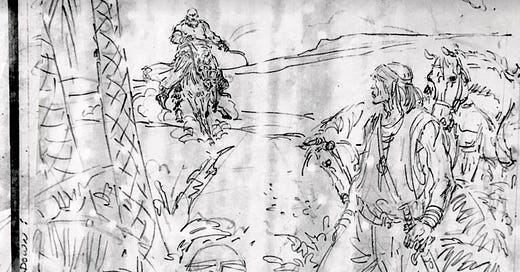





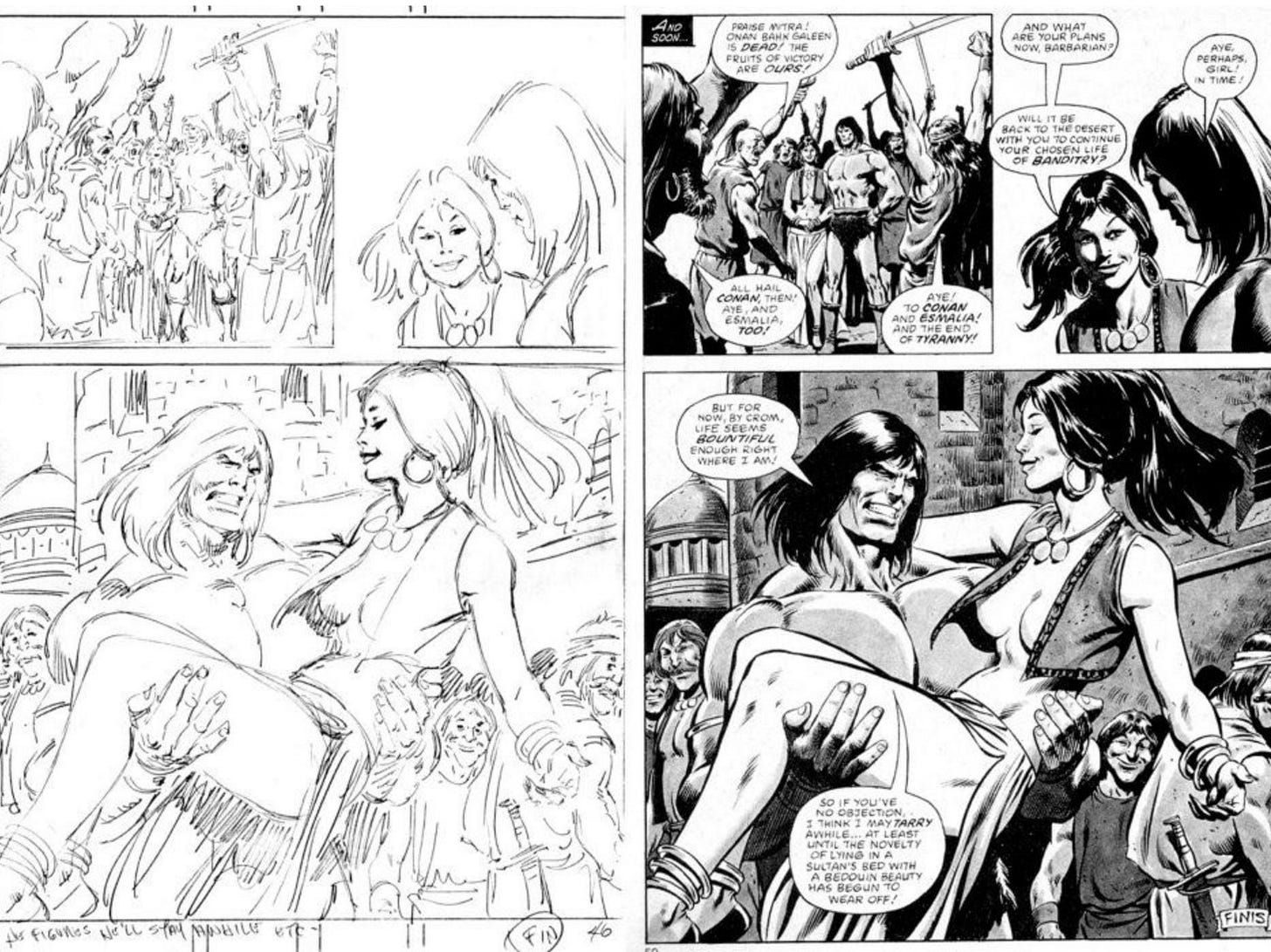

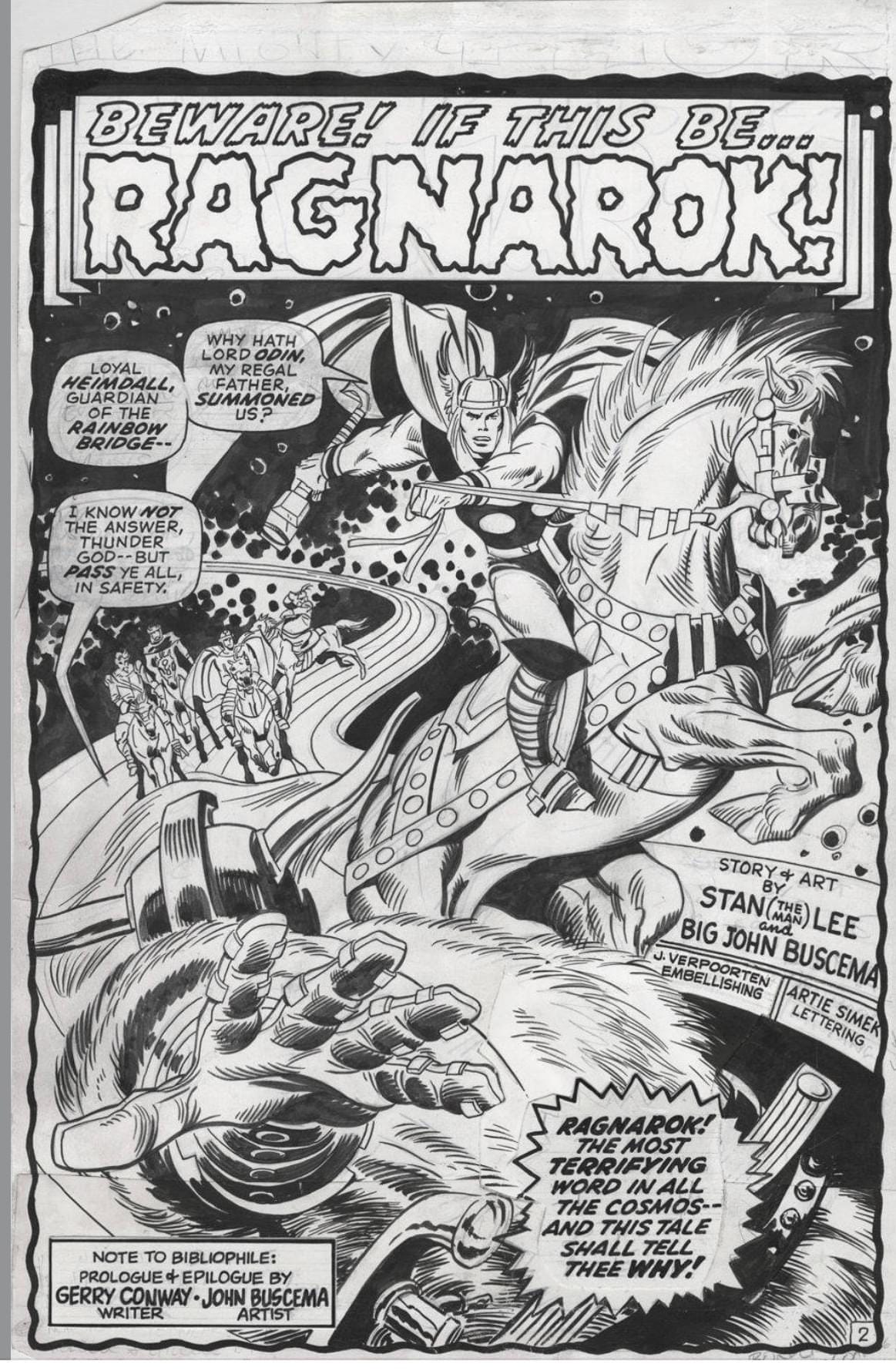
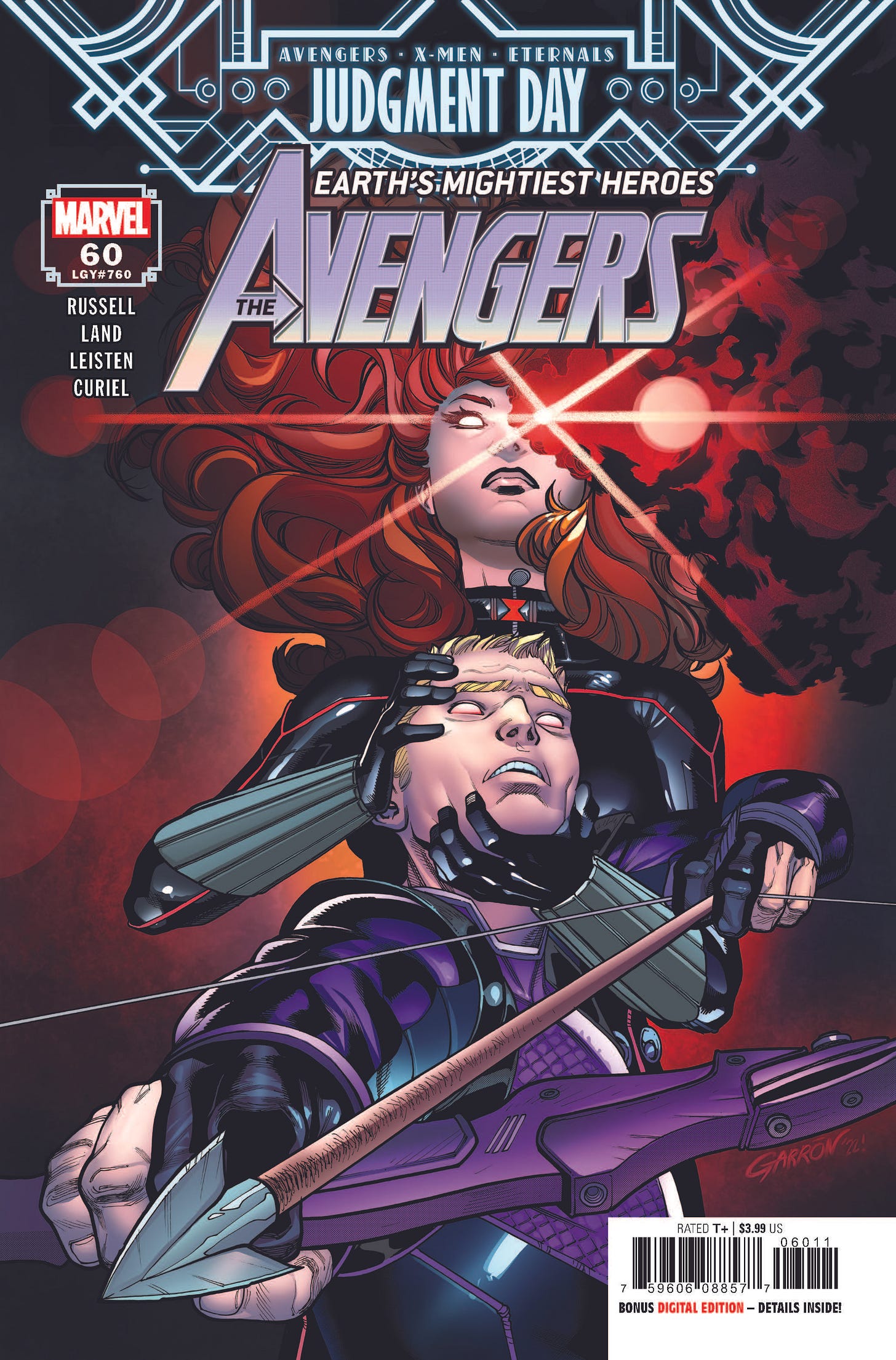

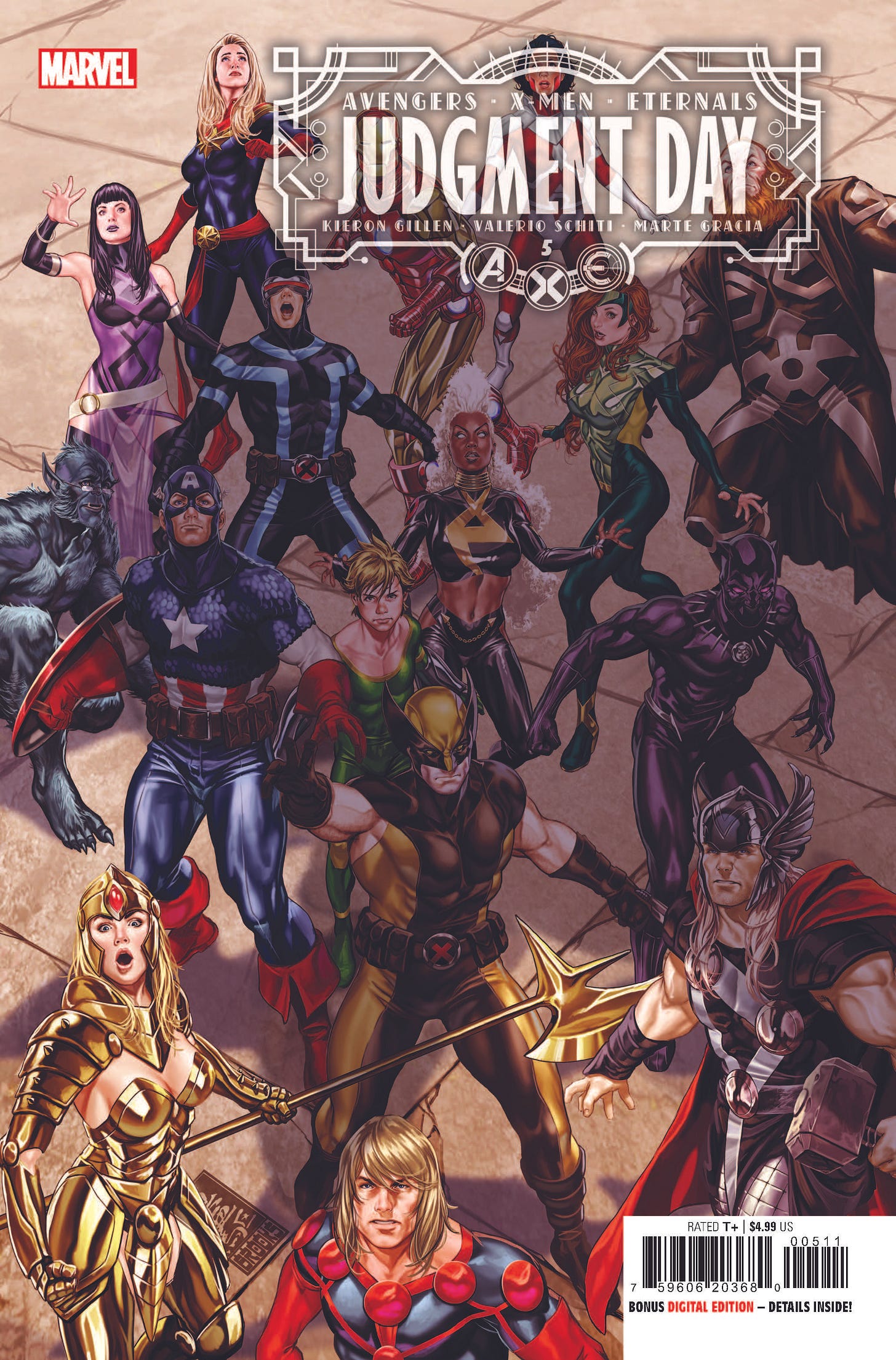
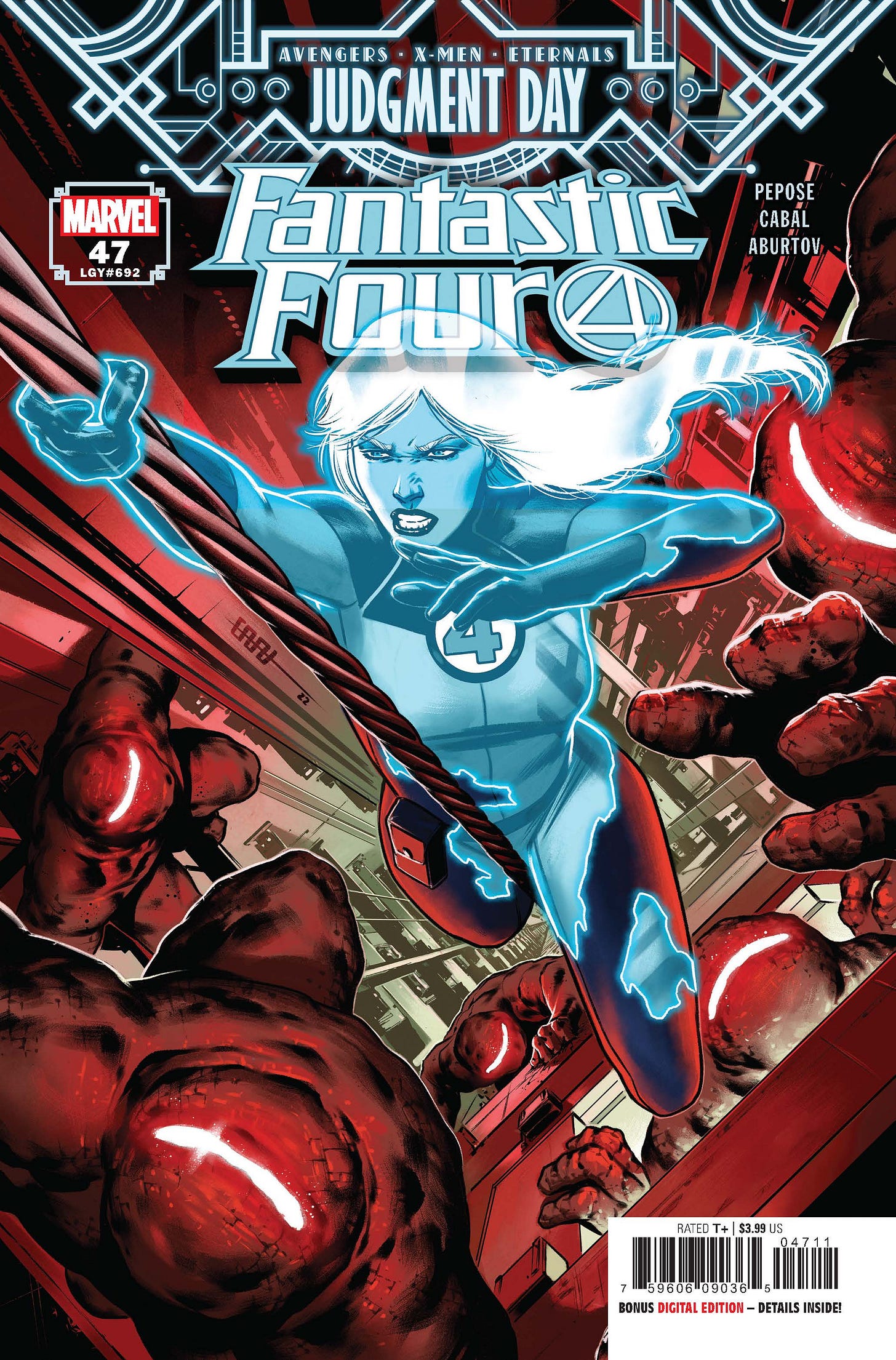


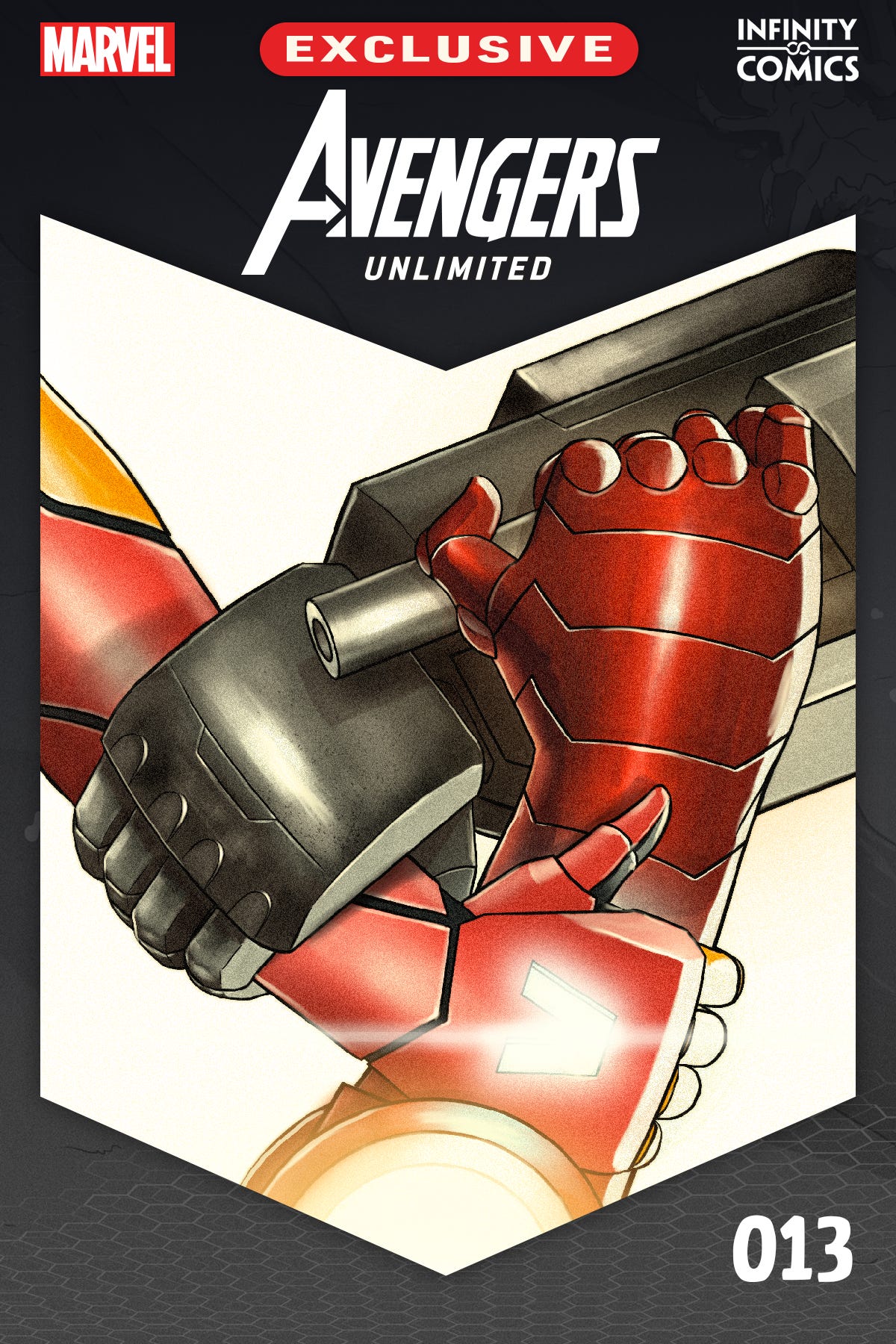






Great stuff, and a bunch of stuff I had no idea about. But... also Bill Jemas asked me to write Marville after he left. Which I thought was bizarre but I wasn't going to not step up to that. And it's not like I could write anything worse than Bill. I did write a script which would have seen the KalAOL kidnap Alan Moore, cage him and have him shaved like a sheep as an offering to Joe Quesada. It ended with the god Glycon attacking New York to free his disciple. I never heard back from Bill, thankfully - just wondered if it ever reached you!
Great newsletter this week! The mention of Mark D. Bright got me thinking about the question of 'staying in' the comics industry (as opposed to the often asked 'breaking in') - would love to hear your thoughts on how some creators (like Peter David) are still getting work vs some who just fade away (aside from the obvious ones who go to another industry full time, retire, etc).
I subscribe to D.G. Chichester's newsletter - he was a prominent editor and writer in the 90s: a long run on DD (issue 300!), Wolverine with Sienkewicz, a Punisher/Cap mini with Klaus Janson, work with the great Jorge Zaffino, etc..at the very least some cult faves. And you can tell he misses it a bit. Some writers talk of editorial turning over and they have no more contacts at the big two. Creators like Roger Stern, Daniel Way, and more seen to have fallen off...your thoughts?